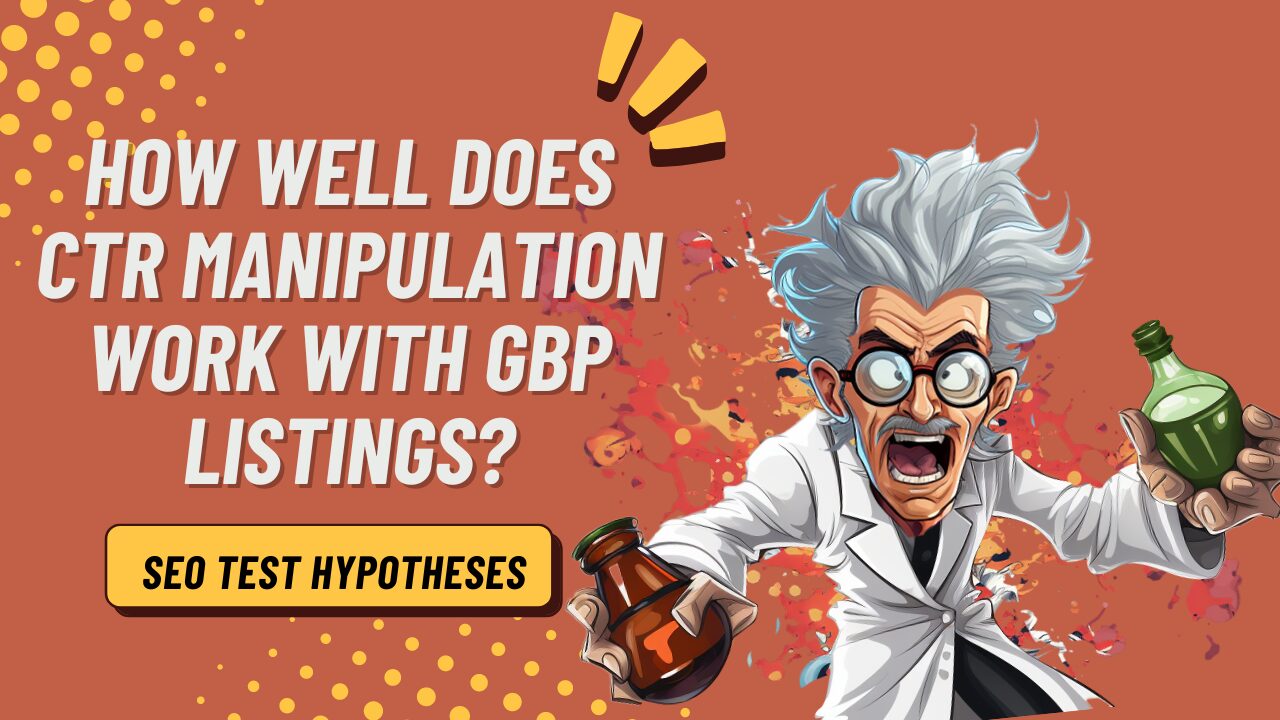Achieve Superior Outcomes with Our Customized CTR Manipulation Service
Achieve Superior Outcomes with Our Customized CTR Manipulation Service
Blog Article
Optimizing Organic Click-Through Fees With CTR Control
The optimization of natural click-through rates (CTR) is a nuanced endeavor that hinges on recognizing both individual psychology and efficient material discussion. The landscape is raging with false impressions and oversimplifications about what truly drives CTR.
Comprehending Click-Through Rates
Recognizing click-through rates (CTR) is vital for examining the performance of internet marketing methods. CTR gauges the percent of individuals that click on a particular web link or advertisement compared to the total variety of customers that see it. A higher CTR shows that the web content is engaging and relevant to the target market, while a lower CTR might signify a requirement for optimization.
To compute CTR, divide the variety of clicks by the number of perceptions and multiply by 100. If an advertisement receives 300 clicks out of 10,000 impressions, the CTR would be 3%. This statistics is essential for analyzing numerous elements of electronic advertising, consisting of seo (SEARCH ENGINE OPTIMIZATION), email campaigns, and social media advertising and marketing.
Moreover, evaluating CTR assists marketing experts determine which techniques produce the most effective outcomes and which call for refinement. By focusing on improving CTR, companies can improve their content's exposure and efficiency, causing enhanced web traffic and prospective conversions. Recognizing the subtleties of CTR is fundamental for any online marketer aiming to maximize their online visibility and make best use of return on financial investment (ROI)

The Psychology of User Actions
Individual habits is substantially affected by emotional aspects that determine exactly how individuals engage with on-line content. Understanding these elements is vital for enhancing click-through prices (CTR) in natural search results page. Cognitive biases, such as the anchoring result, play a crucial role in forming individuals' perceptions. Their preliminary impacts can greatly influence their succeeding judgments about relevance and reliability. when users run into details.
Emotional responses likewise considerably influence customer habits. Web content that resonates mentally can cause a sense of necessity or interest, motivating users to click. In addition, social evidence-- such as individual evaluations or scores-- can boost trust and encourage involvement, as individuals often look to the habits of others to notify their very own choices.
Furthermore, the concept of deficiency can drive clicks - CTR Manipulation. Limited-time offers or exclusive material create an anxiety of missing out (FOMO), engaging customers to act quickly. Understanding these mental vehicle drivers allows marketing professionals to create more engaging content that reverberates with their target audience
Reliable CTR Control Techniques
Leveraging psychological understandings can significantly boost click-through rates (CTR) through targeted control strategies. One of the most efficient techniques is using compelling headlines that evoke inquisitiveness or seriousness. Wording titles as inquiries or incorporating numbers can attract even more focus, motivating users to click.
An additional method entails maximizing meta summaries to produce a feeling of importance and immediacy. By plainly detailing the advantages or options provided in the content, you can engage possible visitors and convince them to click. In addition, utilizing power words-- such as "unique," "shown," or "totally free"-- can enhance the charm of your web content.
Visual aspects also play a crucial duty. Incorporating attractive photos or thumbnails can attract users in and enhance CTR. A/B screening different visuals can aid identify which pictures resonate finest with your audience.
Finally, ensuring that your material assures deliverable value leads to greater CTR. They are more most likely to involve when individuals perceive that clicking will certainly offer them with meaningful understandings or remedies. By using these strategies attentively, online marketers can successfully adjust CTR to their benefit while keeping ethical standards.
Usual Myths Concerning CTR
Numerous misconceptions border click-through rates (CTR) that can lead marketing experts to make misdirected decisions. One widespread misconception is that a greater CTR constantly equates to much better performance. While a high CTR suggests that more customers are clicking, it does not guarantee sales or conversions. Ultimately, the effectiveness of traffic depends on the high quality of the touchdown page and the relevance of the content.
An additional typical belief is that CTR is an isolated metric. In truth, CTR should be evaluated along with various other efficiency indicators, such as bounce rate and conversion rate, to get an all natural view of project success.
Additionally, some online marketers assume that maximizing for CTR alone is enough. Focusing solely on CTR can lead to clickbait techniques that may draw in clicks yet stop working to involve individuals meaningfully. CTR Manipulation Press Release. This approach can harm brand name credibility and cause lower retention prices
Finally, there is an idea that CTR strategies are generally efficient. The truth is that optimal CTR techniques can vary considerably across industries and target audiences, necessitating customized strategies for various market sections. Understanding these misconceptions is crucial for establishing efficient CTR methods that straighten with overarching marketing objectives.
Gauging CTR Success
Although high click-through rates (CTR) can suggest successful involvement with material, gauging their real success needs a thorough evaluation of a number of elements. Initially, it is essential to comprehend the context in which the CTR is attained. A high CTR on a misleading title may not equate to meaningful engagement or conversions, eventually reflecting badly on the brand's integrity.
2nd, evaluating the source of web traffic is vital. Organic traffic from online search engine can represent a robust content approach, while clicks from unnecessary sources may show an absence of targeting. Additionally, determining the subsequent customer behavior is important; assessing metrics such as bounce price, time invested in web page, and conversion rates can give deeper insights right into the high quality of the involvement launched by the CTR.

Conclusion

The optimization of natural click-through rates (CTR) is a nuanced endeavor that hinges on recognizing both individual psychology and efficient content discussion. CTR determines the percent of users that click on a specific web link or promotion compared to the complete number of users that view it. A greater CTR shows that the material is engaging and pertinent to the target audience, while a lower CTR may signal a need for optimization.
Concentrating specifically on CTR can lead to clickbait strategies that might attract clicks but fall short to engage users meaningfully. Furthermore, determining the succeeding individual actions is important; examining metrics such as bounce rate, time spent on page, and conversion rates can provide much deeper insights into the high quality of the engagement started by the CTR.
Report this page